ASIA
‘There will be no security and peace in Central Asia, without peace and security in Afghanistan’
Published
on

Khusrav Noziri, Secretary General of the Economic Cooperation Organisation (ECO), told Harici: “Afghanistan is not only the security concern for Tajikistan but for the whole region, for the whole Central Asia because the Central Asian countries consider the security of Afghanistan as the security of the Central Asia.”
Established in 1985 with Turkey, Pakistan, Iran, Afghanistan, Azerbaijan, Uzbekistan, Kazakhstan, Kyrgyzstan, Tajikistan and Turkmenistan as members, and the Turkish Republic of Northern Cyprus (TRNC) as an observer, ECO is an economically-oriented regional organisation with a population of some 450 million.
Established with the aim of developing regional economic cooperation, ECO enables the implementation of regional cooperation projects in the fields of trade, transport, agriculture, energy, environment, health, industry, finance and economy.
Khusrav Noziri, who has been Secretary General of ECO since 2021, has held senior positions such as Deputy Minister of Foreign Affairs in Tajikistan, as well as diplomatic posts in many countries, including Tajikistan’s embassies in Egypt, the Republic of South Africa and China. In 2021, he was awarded the “20th Anniversary of the Shanghai Cooperation Organisation” medal for his contribution to the establishment and development of the Shanghai Cooperation Organisation (SCO).
Ambassador Khusrav Noziri, Secretary General of ECO, answered our questions about the organisation’s goals, upcoming projects and trade cooperation in Central Asia.
The fact that the Middle Corridor continues to move forward despite obstacles is seen as a symbol of the South Caucasus-Central Asia region’s desire for political and economic autonomy. How do you assess the approach of major powers such as China and Russia to this issue?
Middle Corridor is one of the major corridors in the territory of the Economic Cooperation Organization (ECO) and as you know, we have established the Coordination Committee between ECO and United Nations Economic Committee for Europe (UNEC). In this framework, we are discussing how to better implement this project and realization of this corridor. This corridor is of high importance for our region because from the East, it connects our region to China, one of the most important countries in the world, and also, from the West to Europe. And this issue was also raised in Antalya Diplomacy Forum; it was highlighted that due to some events happening in the eastern part of Europe, the northern corridor has some difficulties. So now, we focus on how to better use of the potential which the Middle Corridor possesses, which cross through the ECO region.
Despite Western pressure, the Economic Cooperation Organization refuses to join the sanctions targeting Russia. How do you assess Washington’s measures on secondary sanctions?
As ECO, we agreed among the member states, not to raise political issues and focus only on the issues of economic cooperation and integration among ten member states. But of course, it is sovereign right of every member state what to decide and whether to implement sanction or not. But what we are doing in our organization is that we have a target set, goals set in trade and transport, connectivity, energy, environment etc. We are now, according to our basic strategic document which is Vision 2025, implementing our projects, in all our priority areas. But, of course, we understand that these sanctions which are enforced against one of our key member states, of course, has negative consequences on our agenda of regional economic cooperation. We understand it. But, nevertheless, we are trying our best to overcome these difficulties and move towards closer cooperation economically and for closer integration in all our priority areas.
Can you give us some details about the remarkable goals which take place in your strategy document, Vision 2025?
According to our basic strategy document which is Vision 2025, we set a target to double our intra-regional trade. If we compare the level of our cooperation in the area of trade, we can see that the amount of our regional trade which is now 9% of from our global trade is much less if we compare with the similar level from other regional economic blocks and organizations. So, that’s why we set the target to double our intra-regional trade. We have two tracks on this. The first is to increase the share of contribution of our organization to the global trade. In 2022, for the first time we, as ECO members, crossed the mark of 1 trillion USD which is about 4% of the global trade. We want to increase our share and our contribution to the global trade. Secondly, we also simultaneously set a target to increase our intra-regional trade, the trade which we have inside the region among the member states. Because if we analyze the trade we can see that many items and commodities could be imported from within the ECO, instead of importing them from outside the block. So, in this regard, we have a huge potential. The second priority area is on transport and communication. In transport and communication, we have many success stories and we already discussed Trans-Caspian Middle Corridor. And also, we have again reactivated the corridor which is called ITI (Islamabad-Tehran-Istanbul) which starts from Islamabad and goes through Tehran and ends in Istanbul. If we compare it with the relevant sea corridor, it will be less expensive and time saving. Now, we are discussing with the Bulgarian companies to extend this corridor to Bulgaria which will eventually connect the South Asia by railway for the first time to Europe. So, it’s another major corridor in our region. Also, we are in the last ministerial meeting on transport which was held in Tashkent last year, we initiated two new corridors, multimodal corridors, which are called TUTIT and KUTIT. TUTIT is abbreviation for Tajikistan, Uzbekistan, Turkmenistan, Iran and Türkiye. KUTIT is for Kyrgyzstan, Uzbekistan, Turkmenistan, Iran and Türkiye. Both are plus China. These two corridors are multimodal corridors. In last September, we had the first meeting of the working group in Dushanbe and now we are discussing when we should have a test-run alongside the TUTIT multimodal corridor.
Another project it is KTI which is Kazakhstan, Turkmenistan and Iran. During the summit which we held in Ashkabad, we agreed to commercialize this transport corridor. One of our targets in the area of transport and communication is to make our transport corridors economic and trade corridors and thus commercialize them. Also, we are developing our cooperation in the area of transport in the maritime cooperation because we have Caspian Sea and Persian Gulf in the south, these are important sea ports. Also, Gwadar sea port in Pakistan and also the important sea ports in Türkiye will be included in the project. Three of our countries in organization have access to the sea but the majority of them, remaining seven member states are landlocked countries. And in this regard, the issues related to increasing the potential of landlock countries and providing them the access to the sea through this echo-gates, is of great importance.
Also, we have a good cooperation in the aviation sphere. In the last ministerial meeting on transport, we decided to grant ECO the status of a hub to Gabala of Azerbaijan and Samarkand of Uzbekistan. This status, which also we hope that, will increase the potential of landlock countries in attracting the business, investments and etc.
Other top priority areas are energy and environment. On energy, I would like to say that we have two flagship important projects. The first one is the establishment of ECO Clean Energy Center in Baku. This is a joint project which is implemented together with United Nations Industrial Development Organization (UNIDO) and the initial phase of the establishment has been completed. Now, we are moving towards the implementation of the next stages of this project. We hope that during the next Conference on Parties 29 (COP29), which will be hosted by Azerbaijan, which is one of our important member states, we will succeed in inauguration of the ECO Clean Energy Center in Baku.
Another flagship program in energy sector is ECO-RAM. It’s a regional electricity market, now it’s at pilot stage. In this project, Türkiye and Iran, as neighboring countries are participating, with the potential involvement of Azerbaijan. But we think that this project has a prospect to be expanded because in our region, we have other countries which are rich in the natural resources and the production of electricity. Some of them are based on the fossils and some of them are based on electricity like Tajikistan and Kyrgyzstan. This cooperation is promising.
Another area is environment. During the last COP in Dubai, we had the ministerial meeting on environment. In this meeting, we decided to have the first meeting of the high-level dialogue platform on environment cooperation in Samarkand, Uzbekistan. It’s a newly established mechanism in our organization.
The next priority area is tourism. Now, we are developing the concept of the tourism capitals of ECO. Now, we have six cities in this project. One of them is Erzurum of Türkiye. Next year, Erzurum will be announced as the tourism capital of ECO. In this regard, we are planning to convene major events in Erzurum. After Erzurum, it will be the turn of the Shusa.
Last year, China organised a quintet summit in Xian that brought Central Asian countries together. How would you interpret China’s growing role in the region?
We understand that China plays a growing role in the ECO member states. That’s why ECO is interested in developing, strengthening and expanding relations with China. As you know, some significant number of ECO member states are the neighbors of China. Starting from Kazakhstan, Kirgizstan, Tajikistan and Pakistan are direct neighbors of China. ECO member states have significant and big projects, infrastructural projects etc. with China, which we consider that eventually could benefit ECO as well for increasing our economic cooperation and integration. So, China, for us, is an important trade partner, economic partner, investment partner.
Some countries are pro-Chinese investments and some countries are feeling worried regarding the Chinese economic growth and being bounded to Belt and Road initiative and debts caused by that. What is the ECO’s position?
If you look at the reality on the ground, I think all member states are welcoming the growing Chinese investments in their economies. We can see it on the ground in the forms of realization of the grand projects and different various areas.
You are not giving this interview on behalf of Tajikistan but if you allow me, I have some questions about your home country as well. We don’t know much about Tajikistan. We cannot speak much with Tajik politicians. It’s very hard to catch them and talk to them. We would like to know more about foreign policy of Tajikistan as according to the Tajikistan constitution it stressed upon a peaceful policy. What is that criteria and how it goes with the regional countries and beyond?
As Secretary General of Economic Cooperation Organization, of course, I cannot talk on behalf of Tajikistan, but I can say that Tajikistan is a very important and active member of our organization. Tajikistan hosted the summit of the organization, the Council of Ministers of the Organization several times. As you know, the Council is the highest decision and policymaking body in our organization. Tajikistan also participates in implementation of different regional projects in our organization. We value the participation of Tajikstan. In Antalya Diplomacy Forum, we once again met with the Foreign Minister of Tajikistan, Sirojiddin Muhriddin and had an exchange of views on the areas of cooperation and strengthening the role of Tajikistan and the activities.
Apparently, Tajikistan has a big issue with two of its neighbors and that’s are Kyrgyzstan and Afghanistan. What steps has been taken to normalize its ties or if there is any chance for improving of ties between those countries?
Again, I cannot speak on behalf of Tajikistan but what I know is that: Both Tajikistan and Kyrgyzstan are our members. We welcome the negotiation process which is going on between Tajikistan and Kyrgyzstan. We heard about the positive developments and the big area of the joint border between Kyrgyzstan and Tajikistan. I think, the delegations agreed on how to demarcate this border. There are positive steps and positive development in this area. Afghanistan also is the member state of ECO. Afghanistan is very important especially in terms of the transport and especially in the terms of energy because we have projects with regard to Afghanistan but because of this current situation and de-facto rulers in Afghanistan, many of our projects are now on-hold. But, we have special program for Afghanistan.
Can we say that this is also one of the biggest security concerns of Tajikistan, too?
Afghanistan is not only the security concern for Tajikistan but for the whole region, for the whole Central Asia because the Central Asian countries consider the security of Afghanistan as the security of the Central Asia. It was stated several times by Central Asian leaders that there will be no security and peace, without peace and security in Afghanistan.
Do you refer to Afghanistan as a country or do you refer to this threat regarding the de-facto rule of Taliban?
I refer to Afghanistan as a country because this situation not started two years ago. It continues already more than 40 years. So, I’m referring to the country. Afghanistan is an important member of our organization but due to this this current situation, Afghanistan regrettably cannot officially attend in our meetings.
The US and China are interested in investing in Tajikistan. Which of them have invested more in Tajikistan and in which areas?
[Laughter] For the countries receiving investments, I think, there is not big difference in who is investing as long as the money flows. I think the countries are interested to increase these investments and increase the number of countries who are coming with the investment. So, I believe, this is a policy of Tajikistan as well.
Looking on the ground, which country is investing more?
According to the statistics which we have, of course, China is the major investor not only in Tajikistan but in all Central Asian countries and in Iran as well and in Pakistan as well.
Is there anything that I didn’t ask you but you want to tell us?
There is one more priority area which I haven’t mentioned. It is human resources and sustainable development. In this regard, this year we are going to convene the first Forum on Sustainable Development in Arkadak, Turkmenistan, which is the new modern smart city. This year is of the chairmanship of Iran. Iran came with the theme of enhanced and resilient ECO region through intra-regional trade. Again, coming back the intra-regional trade is a top priority for our region. With this regard, we are taking necessary measures for our organization. We negotiated on The Economic Cooperation Organization Trade Agreement (ECOTA) and signed and ratified by five member states, which is the minimum for entering into force. But regrettably, this agreement remains non-operational due to the divergence in opinion among the parties on the articles related to the reduction of the tariffs. But, it is not the end of the story but we are now exploring other ways how to facilitate the trade in particular. There are draft trade facilitation strategy and draft trade facilitation agreement.
You may like
-
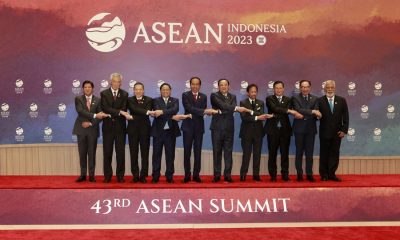

How will Trump’s potential tariffs affect Southeast Asia?
-
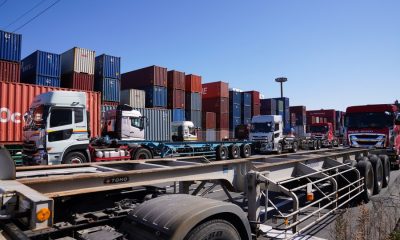

Japan’s exports rise despite global risks, boosted by China
-
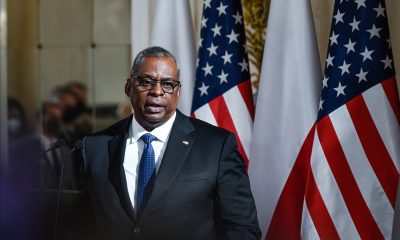

China refuses to meet with U.S. Defence Secretary
-
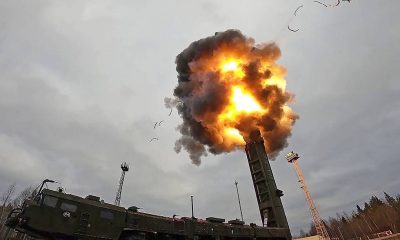

What does Russia’s update of its nuclear doctrine mean?
-
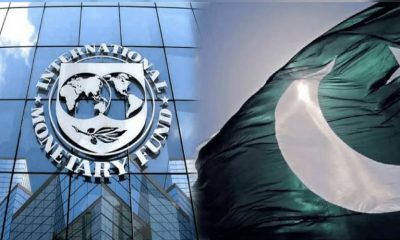

IMF reviews Pakistan’s $7bn bailout
-


Australia, Japan, and the U.S. seek to institutionalize cooperation ahead of Trump’s arrival

Southeast Asia is worried about Donald Trump’s threat of universal tariffs and a new trade war with China. Five of the region’s six largest economies run a trade surplus with the United States.
But experts say the situation may not be so bad. The region, which tries to remain geopolitically neutral, saw an increase in gross trade with both China and the U.S. between 2017 and 2020 during Trump’s first presidency. Vietnam, Indonesia, Malaysia, and Thailand have benefited as companies from China, Japan, South Korea, Taiwan, and the U.S. have expanded their production bases in Southeast Asia to avoid U.S. tariffs.
Experts say exports and economic growth will take a hit in the short term, but the region could benefit from trade diversion and substitution.
What is Trump’s tariff threat?
The goal of Trump’s trade policy is to bring manufacturing jobs back to the U.S. and decouple supply chains from China. Trump and his advisers claim that China’s trade advantage is due to “currency manipulation, intellectual property theft and forced technology transfer”.
During his first term, Trump used executive powers to impose tariffs of up to 25% on $250bn of electronics, machinery and consumer goods imported from China. Beijing retaliated with similar measures on U.S. agricultural, automotive and technology exports.
Now Trump has proposed a 60 per cent tariff on all Chinese goods entering the U.S. and tariffs of up to 20 per cent on imports from everywhere else.
How bad could it be for Southeast Asia?
According to Oxford Economics, about 40 per cent of Cambodia’s exports go to the U.S., making it the largest exporter in Asean as a percentage of total exports, followed by Vietnam with 27.4 per cent and Thailand with 17 per cent. Thanavath Phonvichai, president of the University of the Thai Chamber of Commerce, said the Thai economy could take a 160.5 billion baht ($4.6 billion) hit if Trump fulfils his promises.
Vietnam has the world’s fourth-largest trade surplus with the United States. This imbalance has been growing rapidly as Chinese, Taiwanese and South Korean companies have used Vietnam to avoid Trump-era tariffs. Vietnam’s fortunes could change just as quickly, especially if the U.S. continues to classify Vietnam as a ‘non-market economy’, which requires higher tariffs.
Uncertainty over Trump’s tariffs could cause companies to pause or halt investment plans in Southeast Asia. U.S. companies accounted for about half of Singapore’s $9.5 billion in fixed-asset investment last year, according to the city-state’s Economic Development Board. In his congratulatory letter to Trump, Prime Minister Lawrence Wong was quick to remind him that the United States enjoys a “consistent trade surplus” with Singapore.
Any blow to the Chinese economy will have repercussions for Asean countries that depend on Chinese consumption, export demand and tourism. A reduced appetite for Chinese goods will also affect Southeast Asian suppliers of inputs to Chinese producers. Indonesia, Southeast Asia’s largest economy, will suffer the most because it exports 24.2 per cent of its goods to China, mainly commodities.
Unable to send their goods to the U.S., Chinese exporters may turn to Southeast Asia, where governments have faced complaints from local producers hurt by dumping in metals, textiles, and consumer goods.
What is Southeast Asia’s advantage?
Southeast Asia’s current manufacturing boom started because of the trade war. Over time, analysts expect trade substitution and diversion to outweigh the hit to growth.
“We think a stronger crackdown on China could lead to more supply chain diversion as Chinese companies trade and invest more in Asia,” said Jayden Vantarakis, head of ASEAN research at Macquarie Capital.
“Electric vehicle factories, which some Southeast Asian governments are aggressively pursuing, could provide an economic buffer. Demand for EVs is also growing outside the U.S., so I think there could be a net benefit for Indonesia. Smaller countries that are trying to be carbon neutral, especially as petrol prices get more expensive, will try to take over the supply and buy more electric cars,” said Sumit Agarwal, a professor at the National University of Singapore’s School of Business.
Trump’s promised tariffs could embolden Asean governments to impose anti-dumping duties on Chinese goods, as Thailand did on rolled steel this year. Stricter U.S. rules of origin could also give governments an opportunity to ensure that more high-value parts are produced and assembled locally.
How will Southeast Asian currencies and markets be affected?
Trump’s tariffs could reduce pressure on Southeast Asian central banks to ease monetary policy further.
“Essentially, Trump’s victory is inflationary for the world because of his planned tariffs, so the global monetary normalization or easing cycle will probably not be as sharp as previously thought, including in the Philippines,” said Miguel Chanco, chief emerging Asia economist at UK-based Pantheon Macroeconomics.
Speaking to Nikkei Asia, Chanco said Southeast Asian currencies will not strengthen as much as previously expected, partly because markets are re-pricing the pace of easing by the U.S. Federal Reserve and thus the dollar will continue to strengthen.
Among Southeast Asia’s six major economies, the Thai baht and Malaysian ringgit have been the worst-performing currencies since Trump’s victory, losing 3.2 per cent and 2.9 per cent respectively against the U.S. dollar through Wednesday.
Thai brokerage InnovestX recommended stocks that would benefit from a strong dollar and weak baht. These include companies with significant export earnings, such as CP Foods and Delta Electronics, or tourism-related companies such as Airports of Thailand, property developers and hoteliers.
Governments are already taking steps to reduce their over-dependence on the U.S. or China by deepening ties with other countries and regions and emphasizing their neutrality.
Southeast Asian economies in particular are also expected to focus on building resilience by strengthening intra-ASEAN trade.
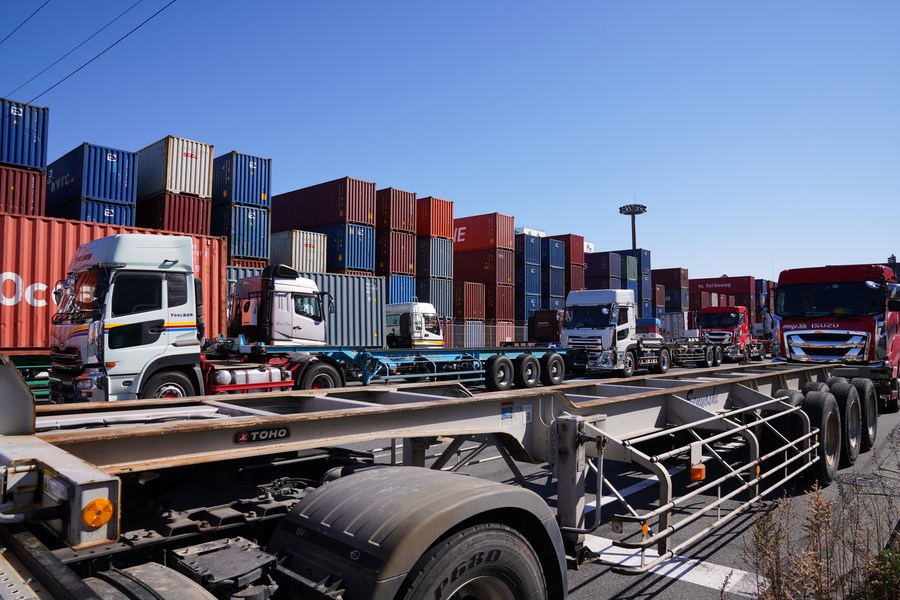
Japan’s exports rose more than expected in October, driven by strong demand from China and other parts of Asia, despite growing uncertainties in global markets.
Exports increased by 3.1% year-on-year, led by significant growth in shipments of chip-making equipment, particularly to China, according to the Finance Ministry’s report on Wednesday. This marked a rebound following the first drop in 10 months in September. October’s figures exceeded economists’ forecasts of a 1% rise and were also bolstered by increased shipments of medical products to the United States.
Meanwhile, imports edged up by 0.4%, defying expectations of a 1.9% decline. As a result, the trade deficit widened to 461.2 billion yen ($2.98 billion), compared to 294.1 billion yen in the previous month.
This stronger-than-expected export performance has raised optimism about Japan’s economic recovery. Although the country’s gross domestic product (GDP) expanded for the second consecutive quarter through September, the pace of growth has been tempered by the drag from net exports.
“Today’s data raises hopes that external demand will revive in the October-December quarter,” said Hiroshi Miyazaki, Senior Research Fellow at the Itochu Research Institute. “The Chinese government’s stimulus measures have stabilized its economy and reversed the prior decline.”
Exports to China rose by 1.5% last month, rebounding from a 7.3% drop in September, with semiconductor manufacturing equipment exports surging by nearly a third. These gains align with signs that China’s stimulus policies are beginning to yield results, driving growth in certain sectors and boosting consumer spending.
Notably, Japanese exports grew despite the yen’s strengthening against the dollar, averaging 145.87 yen per dollar in October—2% stronger than the previous year, according to ministry data.
The export rebound occurs against a backdrop of heightened concerns about global trade policies. Business leaders are bracing for the potential return of Donald Trump to the White House, with fears that his proposed tariffs—60% on imports from China and 20% on other nations—could disrupt international commerce.
Some regions are already experiencing a slowdown. Shipments to the United States and Europe declined by 6.2% and 11.3%, respectively, in October.
The Bank of Japan (BoJ) is closely monitoring these developments. BoJ Governor Kazuo Ueda noted on Monday that while the Federal Reserve’s prospects for a soft landing have improved, risks tied to the U.S. economy and their impact on global markets require careful consideration.
The most pressing concern for Japan’s trade outlook is the impact of potential U.S. tariffs. Historical data from the U.S.-China trade war (2018-2019) suggests that a 1% increase in export prices, including tariffs, led to a 0.35 percentage-point reduction in profit margins for Chinese exporters, according to research from Stanford University’s Centre for Chinese Economics and Institutions. A similar scenario could hurt Japanese firms’ profitability, counteracting gains from the yen’s depreciation.
“We are not yet at a stage where Trump’s tariff policy is clearly impacting export volumes or exporters’ behavior,” Miyazaki told The Japan Times. “However, there remains significant uncertainty, and we must continue to monitor the policy stance of the next Trump administration,” he added.

An International Monetary Fund (IMF) team conducted an unscheduled visit to Pakistan last week to assess the country’s progress on the terms of its $7 billion bailout package. The surprise visit, coming less than two months after the loan’s approval, has raised questions about the future of the bailout program. IMF staff are expected to present their findings to the Washington-based executive board for review.
What prompted the IMF’s unexpected visit to Pakistan?
Several officials, speaking to Nikkei Asia on condition of anonymity, highlighted key factors prompting the visit. These included a $685 million shortfall in the government’s tax collection target for the first quarter of the current fiscal year and a $2.5 billion deficit in the external financing required under the bailout terms. Compounding these issues was the failed sale of Pakistan International Airlines (PIA), a key component of the IMF-recommended privatisation drive.
While routine IMF program review visits are standard, the timing of this visit—just seven weeks after board approval—has raised concerns. “This suggests significant difficulties in implementing the program,” said Naafey Sardar, an economics professor at St. Olaf College in the United States, speaking to Nikkei Asia.
Ikram ul Haq, a lawyer specializing in economic and tax policy, added, “The reality is that the government’s promises to the IMF have not been fulfilled.”
What were the key issues discussed?
The IMF raised the issue of the tax gap and urged action to ensure that Pakistan meets its annual tax collection target of $46 billion.
Islamabad was also asked to engage with Saudi Arabia and China, the largest investor, to bridge the external financing gap. Promised energy sector reforms and the repayment of billions of dollars of debt owed to mostly Chinese-backed power plants in Pakistan were also discussed.
Another issue was for the IMF to press provincial governments for more funds, such as the Benazir Income Support Programme, which provides a $2.1 billion annual cash transfer for poverty alleviation, currently paid for by the central government.
How does agricultural income tax fit into this picture?
As part of the loan agreement, Pakistan’s provinces missed an end-October deadline to harmonize their agricultural income tax laws with the federal income tax.
The IMF had previously said that Pakistan’s loan agreement would be in jeopardy if agricultural income remained largely untaxed. During the meetings, provincial government officials told the IMF that they would face significant difficulties in implementing a higher tax.
Economist Aqdas Afzal said such a move would face significant opposition from big landowners, who are disproportionately represented in the federal and provincial assemblies.
“Given the weak mandate of the current government, a higher agricultural income tax is unlikely as it could trigger major social and political unrest,” he added.
What assurances has the government given to the IMF?
Pakistan has assured the IMF that it will increase the provincial agricultural income tax rate by up to 45 percent. It has also pledged to meet annual tax collection targets and to continue reforms in the energy sector and state-owned enterprises.
“This is an ongoing dialogue process and there have been discussions [with the IMF] on energy and SOE reforms, the privatization agenda and public finance,” Pakistan’s Finance and Revenue Minister Muhammad Aurangzeb told local media.
Haq, a tax expert, said the government’s primary focus would be on meeting the six-month revenue collection target set by Pakistan’s Federal Board of Revenue, a government agency that regulates and collects taxes.
What are the challenges ahead for Pakistan’s loan agreement?
Meeting tough tax targets and implementing structural reforms are major hurdles for the government to overcome.
The IMF has previously cancelled other loan programmes when conditions were not met. Payments to Pakistan could be suspended or stopped altogether, which would be a serious blow to a country struggling with a sputtering economy.
The IMF is pressing for cuts in government spending.
“Structural reforms are being resisted by vested interests, making efforts to meet IMF conditions even more difficult,” Haq said.

Operationsplan Deutschland: The debate over ‘planned economy’ in Germany

Some Afghan journalists contemplating suicide; but why?

How will Trump’s potential tariffs affect Southeast Asia?

ICC issues arrest warrant for Netanyahu and Gallant on war Crimes charges

The era of the ‘right-wing majority’ in the European Parliament
MOST READ
-
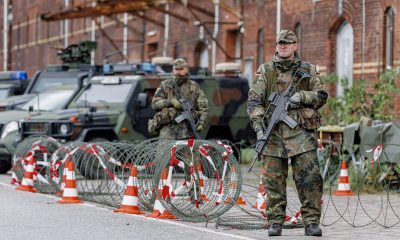
 EUROPE3 days ago
EUROPE3 days agoThe German army takes steps toward economic militarization
-
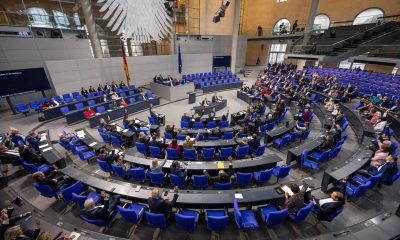
 EUROPE2 weeks ago
EUROPE2 weeks agoA ‘holy alliance’ in the Bundestag: Anti-semitism law unites AfD and Greens
-
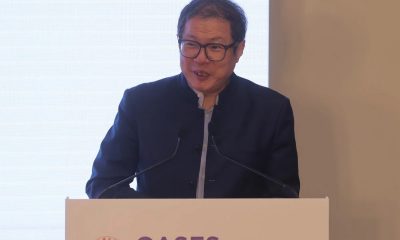
 ASIA2 weeks ago
ASIA2 weeks agoAstraZeneca’s top Chinese executive detained by authorities
-
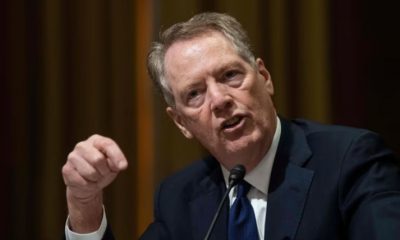
 AMERICA2 weeks ago
AMERICA2 weeks agoNew trade wars on the horizon: Trump signals return of ‘isolationist’ Lighthizer
-
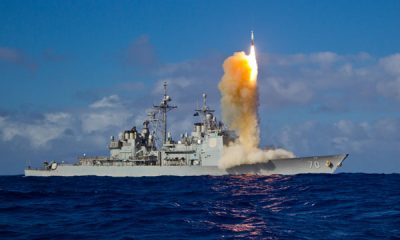
 ASIA2 weeks ago
ASIA2 weeks agoTaiwan considers major U.S. defense purchases in anticipation of Trump
-
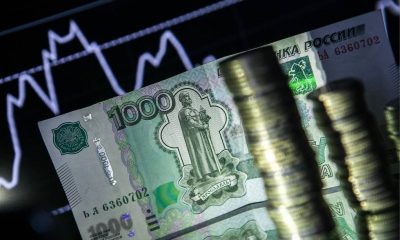
 RUSSIA2 weeks ago
RUSSIA2 weeks agoRussia’s federal dudget in deficit again
-
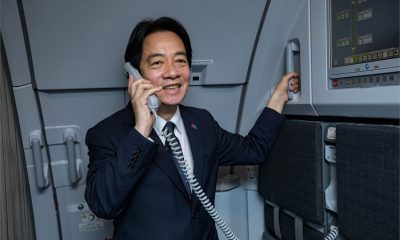
 ASIA2 weeks ago
ASIA2 weeks agoTaiwan braces for second Trump term
-
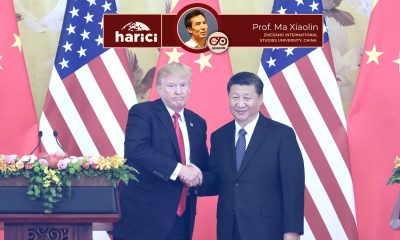
 OPINION2 weeks ago
OPINION2 weeks agoTrump’s overwhelming victory to reclaim the White House: Mixed reactions across the globe

